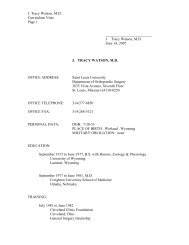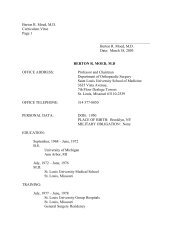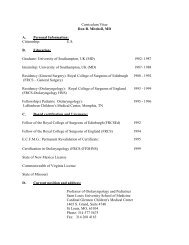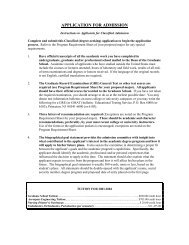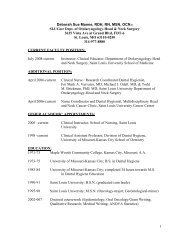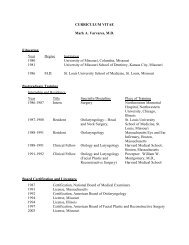Living Image 3.1
Living Image 3.1
Living Image 3.1
You also want an ePaper? Increase the reach of your titles
YUMPU automatically turns print PDFs into web optimized ePapers that Google loves.
H. 3D Reconstruction of Light Sources<br />
240<br />
Series or the IVIS Spectrum. For IVIS Spectrum or 200 Series data, if there is<br />
significant signal on the side of the subject, a larger angle of 70-85° can be used.<br />
Kappa Limits (DLIT)<br />
Kappa (κ) is a parameter that is searched during a reconstruction to determine the best<br />
fit to the image data. Small values of kappa tend to favor deeper sources, while large<br />
values favor more shallow sources.<br />
The limits on kappa are minimum of 0.1 and a maximum of 10. The default range for<br />
kappa is 0.5-4. Kappa is doubled at each iteration, so for a selected range of 0.5-4, the<br />
kappa values for each iteration would be 0.5, 1, 2. and 4. Choosing a large range for<br />
kappa produces the most reliable solution, but requires more analysis time.<br />
N Surface (FLIT)<br />
The number of surface intensity points to use in the reconstruction at a given source<br />
position.<br />
N Surface Limits (DLIT)<br />
This is the maximum number of surface intensity points to use in the reconstruction at<br />
a given wavelength. The range is 200 to 800 and the default is 200. The time required<br />
for reconstruction is shortest for smaller values of N (for example, 200). However, a<br />
large N value may give a more accurate result because more data are included in the fit.<br />
Starting Voxel Size (FLIT)<br />
Voxels are the small cubes of space inside a subject, each of which contains a quantity<br />
of fluorescent yield. The FLIT reconstruction begins with large voxels, specified by the<br />
starting voxel size (the length of a voxel cube side in mm). At each iteration, the<br />
algorithm reduces the size of the voxels by a factor of 2 until the optimum solution is<br />
determined.<br />
Starting Voxel Size Limits (DLIT)<br />
Voxels are the small cubes of space inside a subject, each of which contains a light<br />
source (much like a pixel in a 2D image). The DLIT reconstruction begins with large<br />
voxels, specified by the voxel size limit (the length of a side of the voxel cube in mm).<br />
At each iteration, the algorithm reduces the size of the voxel by a factor of two until the<br />
optimum solution is found.<br />
The voxel size limits are a minimum of five and a maximum of 10. The default range<br />
is set to 6-9 mm. A larger range of voxel limits ensures a more reliable solution, but<br />
requires more computational time.<br />
Voxel Size Increment (DLIT)<br />
This is the step increment in voxel size, stepping from the minimum voxel size limit to<br />
the maximum voxel size limit. For example, if the voxel size limit ranges from 6-9 mm,<br />
a voxel size increment = 1 gives four starting voxel sizes (6, 7, 8, and 9 mm).<br />
The default increment of 1 mm is usually adequate, however smaller increments can be<br />
used if you want to sample finer voxel sizes. Smaller increments will significantly<br />
increase the time required for reconstruction.




